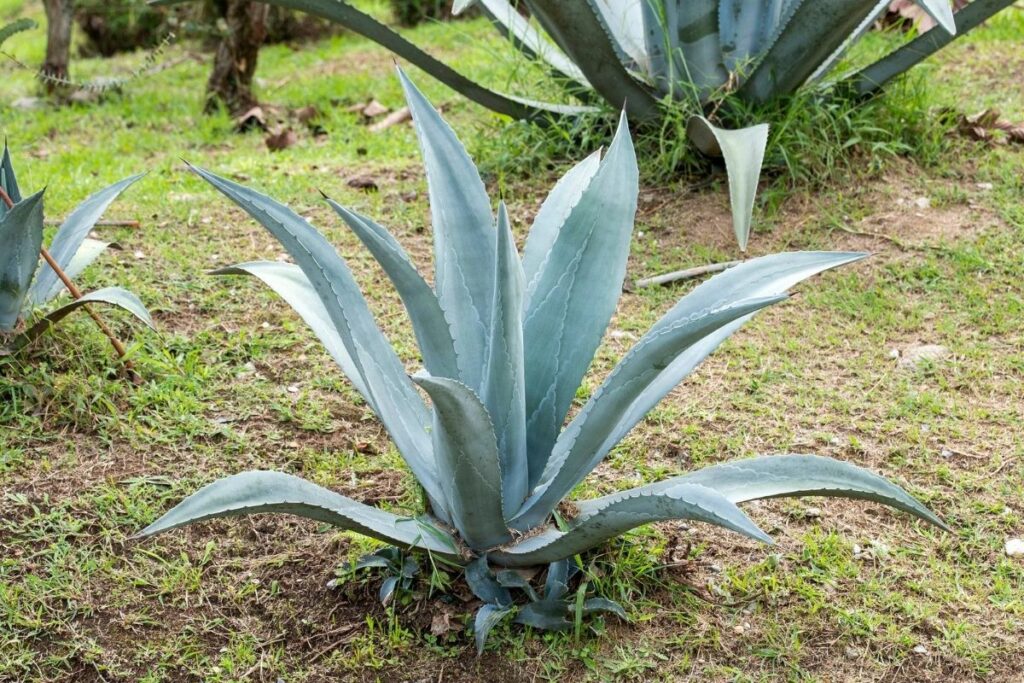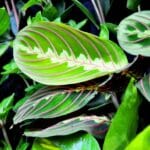The Agave tequilana (also known as Weber’s Blue Agave, century plant, or tequila agave) is a succulent plant native to North America, specifically Mexico. The Agave tequilana plant is from the Asparagaceae family of plants. It grows really fast, and they have large and pointy rosettes that resemble swords.
They are better known for being the base ingredient to one of the most famous distilled spirits in the world: Tequila, which has been cultivated for hundreds of years.
Are you ready to learn more about the Agave tequilana? This article will tell you everything you need to know about this succulent plant!
Basic Facts
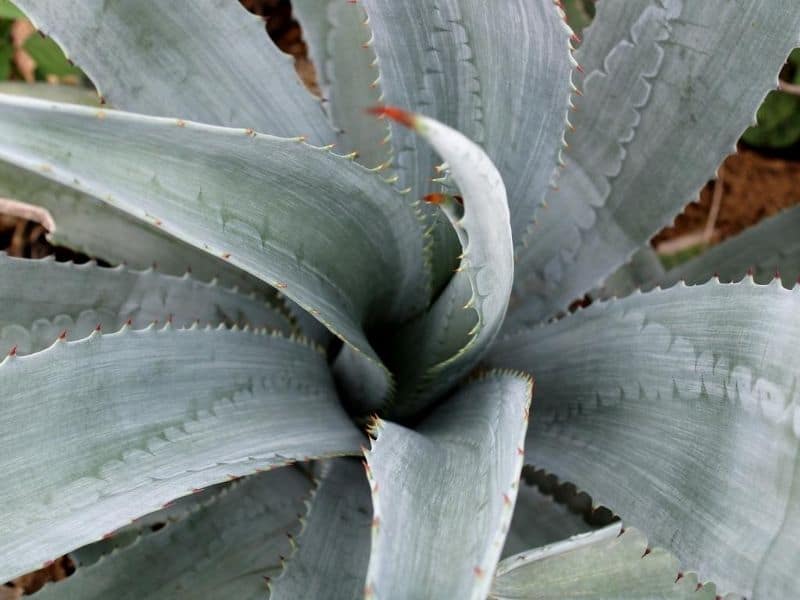
Agave tequilana, also known as Weber’s blue agave, belongs to the Agavaceae family and is characterized by its striking appearance and economic significance.
The plant’s succulent leaves are bluish-gray in color, with sharp, serrated edges and a fibrous texture. Blue agave is monocarpic, meaning it flowers only once in its lifetime, typically after 7-10 years of growth.
It has tall flower stalk, called a quiote, can reach impressive heights before producing yellow flowers. After flowering, the plant dies, leaving behind offsets for propagation.
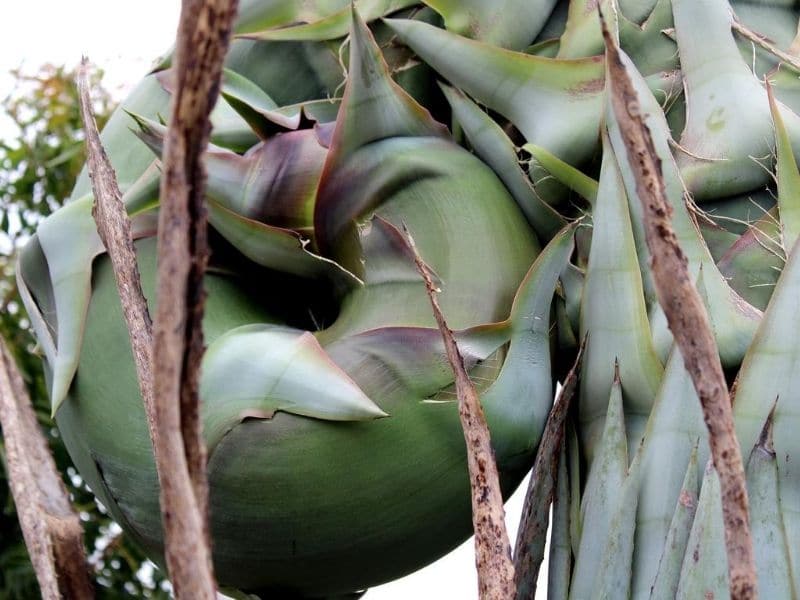
How to Grow and Care for an Tequila Agave
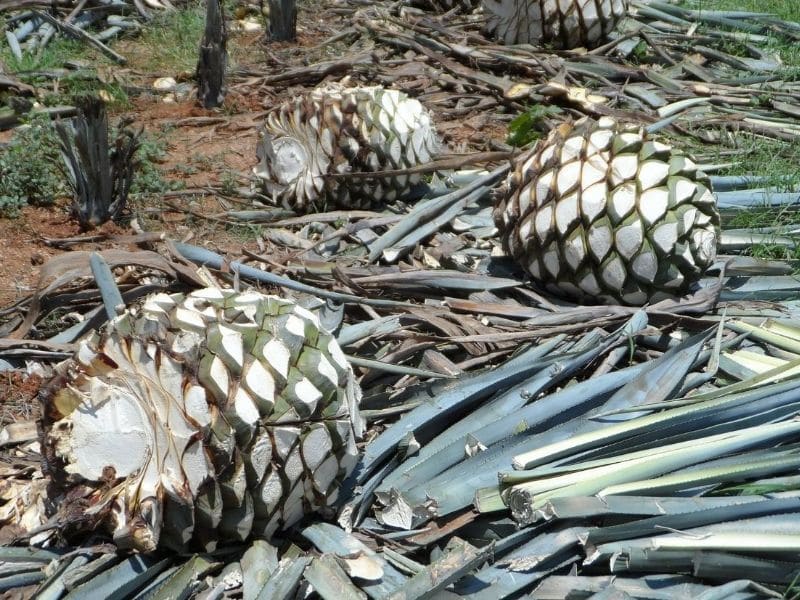
If you are considering getting an Agave tequilana plant, then what are you waiting for!? This succulent has a nice and shiny pink flower when it blooms. It is a beautiful yet easy-to-care plant that will surely catch everyone’s attention while also making your garden (or any outdoor areas) an exceptional place.
Here’s how you can take care of it:
Soil
This drought tolerant plant thrives in well-draining, sandy or rocky soil with a slightly acidic to neutral pH (around 6.0 to 7.0). Soil that retains too much moisture can lead to root rot and other diseases, so good drainage is essential.
While blue agave is adapted to arid conditions, it benefits from occasional deep watering to establish roots. Incorporating organic matter like compost can improve soil structure and fertility, but excessive fertilization should be avoided.
Additionally, the soil should be loose and airy to allow for proper root development and prevent waterlogged conditions.
Water Needs
The Agave species needs minimal water. Make sure that you place the right quantity—don’t overwater them! The soil shouldn’t be entirely filled with water, quite the contrary, you just need to make sure the soil is damped and moist. Allow the soil to completely dry before adding additional water.
Agave root rot is a common issue caused by poor drainage or excessive moisture. To prevent it, ensure your Agave is planted in well-draining soil and receives adequate sunlight.
Propagation
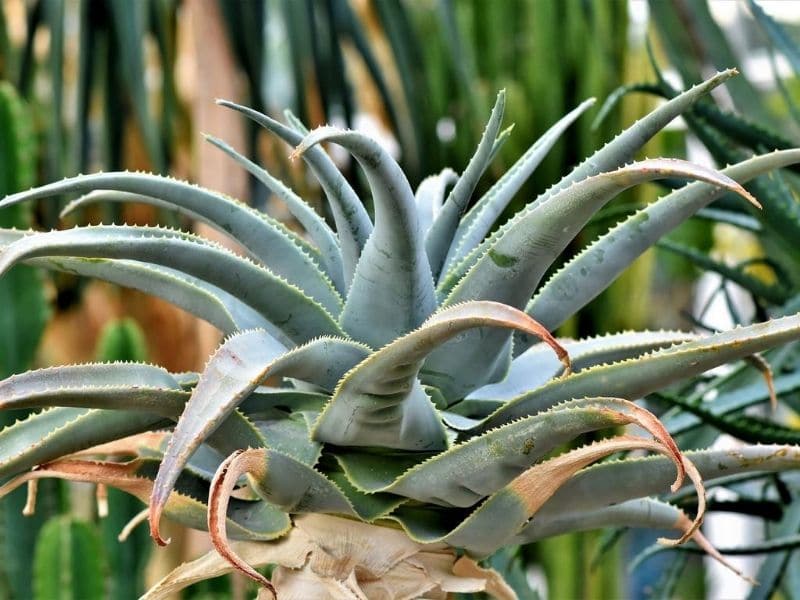
You could propagate the Agave tequilana succulent by using its cuttings or leaves, but you can also produce seeds and grow them from scratch, albeit, it could be more challenging and time-consuming. Seeds take a considerably longer time to develop correctly compared to other methods.
If you are propagating the agave succulent from leaves or cuttings, then try to cut the largest leaf. This way, you will make sure your parent plant will be strong enough to survive and grow healthily. Use some gardening scissors or a small knife for this step.
Ideally, you should wait a couple of days before replanting this leaf to heal itself and form a callus that will help the agave grow more once you finally replant it and place it in a new pot or area.
On the other hand, if you are propagating agave plants by using seeds, then you need to make sure the soil is well-drained. Try to add some compost first, and then you can plant the seeds.
I wouldn’t recommend you plant agave from seeds, as it will take a long time for you to see the plant. However, if you are very patient and don’t mind waiting, then you should plant it this way!
Pruning
Pruning Agave tequilana, or blue agave, is generally minimal. Remove dead or damaged leaves by cutting them at the base with sharp, clean pruning shears.
Be cautious of the sharp spines along the dark brown marginal teeth. If pups (small offsets) emerge around the base of the plant, they can be carefully separated and replanted to propagate new specimens.
When dealing with mature plants, avoid over-pruning, as this can weaken the plant and leave it vulnerable to pests and diseases. Pruning is primarily for aesthetic purposes or to remove dead or diseased foliage, and it should be done sparingly to maintain the natural form and vigor of the agave.
Sunlight
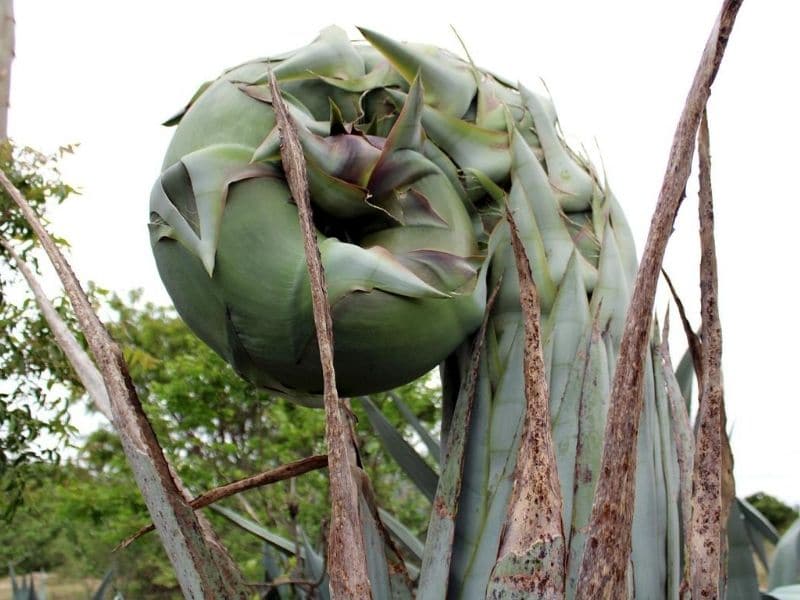
Agave tequilana thrives in full sun, requiring at least 6-8 hours of direct sunlight daily for optimal growth. This succulent is well-adapted to arid environments and intense sunlight. However, it can also tolerate partial shade. Inadequate sunlight may lead to stretched or weak growth.
Pests and diseases
Common pests and diseases that affect Agave tequilana, also known as the blue agave, include agave snout weevil, which burrow into the plant’s core, causing rot and eventual death.
Aphids can also infest agave plants, sucking sap and causing wilting and stunted growth. Agave plants are susceptible to fungal diseases such as root rot, which thrives in poorly drained soil and causes yellowing and collapse of leaves.
Leaf spot diseases caused by fungi or bacteria can result in brown or black spots on the foliage. Regular inspection and proper cultural practices can help prevent and manage these issues.
Types of Agave
Agave tequilana, or blue agave, encompasses several types and cultivars, each with unique characteristics.
- The most common cultivar is ‘Weber Blue,’ prized for its high sugar content and ideal growth for tequila production.
- Agave Americana is known for its large size, reaching 6-12 feet tall, with broad gray-green leaves and sharp brown terminal spine.
- ‘Azul,’ another popular variety, is known for its striking blue-gray foliage and rapid growth.
- ‘Marginata’ features creamy white or yellow margins along its dark green leaves, adding ornamental value.
- ‘Variegata’ showcases creamy-white variegation throughout its foliage, creating a striking contrast.
- Other cultivars include ‘Quadricolor,’ ‘Mediopicta,’ and ‘Ferdinand Regis,’ each with distinct leaf patterns and coloration. These cultivars offer diverse options for both commercial and ornamental cultivation.
FAQs
How long does it take to grow agave tequilana?
Agave tequilana, also known as the blue agave, typically takes around 8-10 years to reach maturity and produce the flowering stalk used in tequila production. However, the plant itself can reach full size within 5-7 years.
Are agave plants hard to maintain?
No, Agave plants are generally low-maintenance and can thrive with minimal care once established. They are drought-tolerant and resilient, making them relatively easy to maintain in suitable growing conditions.
Is agave plant indoor or outdoor?
Agave plants are primarily outdoor plants, as they require plenty of sunlight and well-draining soil to thrive. While some smaller varieties can be grown indoors in containers, they require bright, indirect sunlight and proper airflow to prevent issues like stretching and rot.
Do agave plants need sun?
Yes, agave plants require plenty of sunlight to grow and thrive. Plant them in a sunny location where they can receive at least 6-8 hours of sunlight daily. Insufficient sunlight can lead to stretching, weak growth, and reduced vigor in agave plants.
Conclusion
If you are looking into ways of having a varied garden, then why don’t you get some Agave tequilana’s succulent plants? They are affordable, easy to care, and they don’t require much attention on your behalf.
By following these simple agave tequilana care tips, you can ensure your agave flourishes and adds a touch of unique beauty to your landscape.
And the great thing about growing succulents? They look great and, thanks to their spiky blue green leaves, they will deter animals away from your garden!
Image by depositphotos.com/Luisecheverriurrea

